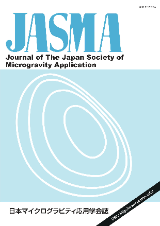26 巻, 2 号
材料あれこれ
選択された号の論文の14件中1~14を表示しています
- |<
- <
- 1
- >
- >|
-
2009 年26 巻2 号 p. 65-
発行日: 2009/04/30
公開日: 2021/01/21
PDF形式でダウンロード (384K) -
2009 年26 巻2 号 p. 66-
発行日: 2009/04/30
公開日: 2021/01/21
PDF形式でダウンロード (3739K) -
2009 年26 巻2 号 p. 72-
発行日: 2009/04/30
公開日: 2021/01/21
PDF形式でダウンロード (9944K) -
2009 年26 巻2 号 p. 81-
発行日: 2009/04/30
公開日: 2021/01/21
PDF形式でダウンロード (10015K) -
2009 年26 巻2 号 p. 88-
発行日: 2009/04/30
公開日: 2021/01/21
PDF形式でダウンロード (10177K) -
2009 年26 巻2 号 p. 95-
発行日: 2009/04/30
公開日: 2021/01/21
PDF形式でダウンロード (2847K) -
2009 年26 巻2 号 p. 100-
発行日: 2009/04/30
公開日: 2021/01/21
PDF形式でダウンロード (3978K) -
2009 年26 巻2 号 p. 106-
発行日: 2009/04/30
公開日: 2021/01/21
PDF形式でダウンロード (10267K) -
2009 年26 巻2 号 p. 111-
発行日: 2009/04/30
公開日: 2021/01/21
PDF形式でダウンロード (1405K) -
2009 年26 巻2 号 p. 117-
発行日: 2009/04/30
公開日: 2021/01/21
PDF形式でダウンロード (5801K) -
2009 年26 巻2 号 p. 122-
発行日: 2009/04/30
公開日: 2021/01/21
PDF形式でダウンロード (1769K) -
2009 年26 巻2 号 p. 126-
発行日: 2009/04/30
公開日: 2021/01/21
PDF形式でダウンロード (15397K) -
2009 年26 巻2 号 p. 134-
発行日: 2009/04/30
公開日: 2021/01/21
PDF形式でダウンロード (1579K) -
2009 年26 巻2 号 p. 139-
発行日: 2009/04/30
公開日: 2021/01/21
PDF形式でダウンロード (4035K)
- |<
- <
- 1
- >
- >|
